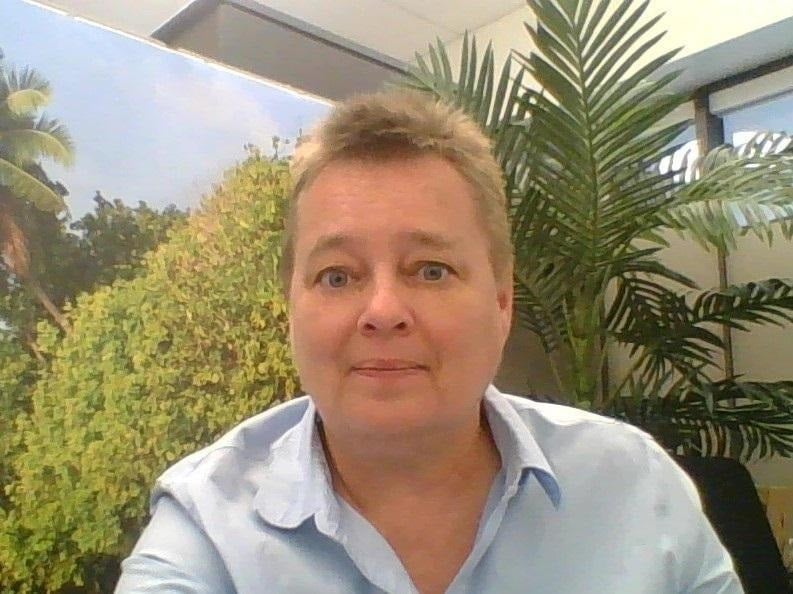![Cheryl Macleod [Image: HP Inc.]](https://fabbaloo.com/wp-content/uploads/2020/05/Cherylheadshot_img_5eb09b60d94a0.jpg)
The 4th Industrial Revolution is here. The digital transformation of our global society and economy is accelerating everywhere. Nowhere is this more acute than the $12 trillion global manufacturing sector. Disruptive technologies like 3D printing have the potential to empower people in ways never possible before, opening up the world of digital design and manufacturing to new geographies and allowing entirely new groups to participate and benefit.
This International Women’s Day, I am excited by the promise of this technology transformation to tackle problems in new ways, powered by a more diverse and inclusive workforce. It is my personal passion to get more women involved in engineering, and it is my hope that by sharing my own journey I can inspire more people from all walks of life to join us in changing the way the world designs and manufactures.
Small Town STEM to 3D Fusion Science Leader
I grew up in a small town in Iowa, where I didn’t know any engineers, and certainly not any female engineers. I was always good at math and science, and looking around my little town, it seemed to me that the best way to put those skills to work would be as a doctor or veterinarian. Ultimately, I decided I would go to my state university with a goal to eventually go to medical school. When I learned from a university recruitment brochure that biomedical engineering students had the highest med school acceptance rate, it seemed the smartest choice.
My career trajectory changed my last year of college. One of my housemates was in medical school, and when she started talking about med school and residency, she didn’t sound like she was having a lot of fun. I realized that I was having a lot of fun in my engineering classes, and at that point I decided I was going to continue and stay with engineering.
I determined that I would open myself up to all the possible options engineering offered and find the one I loved. I ultimately settled on chemical engineering and ended up earning a Ph.D. from the University of California at Berkeley. I was (and still am) fascinated by chemistry, and how you can take one material, transform it into another and do amazing things with just a small number of building blocks.
After receiving my Ph.D. I began looking for work in traditional chemical and oil companies. Everywhere I went I found myself in staid, formal environments where women were conspicuously absent. After an interview I would usually have lunch with what I came to call “the woman,” that is, the lone female typically employed in the business units where I was looking for a position.
HP was a huge contrast. When I came to HP, I saw women everywhere. It was a much more informal and dynamic environment, and I saw a lot of collaboration. Even though I was taking a risk as a chemical engineer coming to a company that was known for electronics, it felt right that I took the leap.
Three Guiding Principles
I soon realized that empowering groups of people to achieve high goals could have huge impact – taking pioneering work in the labs and making it real to a business and to customers. So, I joined the ranks of management early on. And as I progressed in my career, I think there were three factors that guided me:
-
A passion for new knowledge. Very early in my career I made a deliberate decision that when my job got boring or routine I would look for something new to do. I focused on getting a diversity of experiences, and I now realized that it’s critical to keep learning at every stage of your career. One of the things that’s great about HP is that you can do that without changing companies.
-
Strategic outreach. Whenever I was looking for a new opportunity, I always began by stating my intention to the world. I built a strong network over time consisting of people I had worked for or with, and many times it was those people who sponsored me for new positions.
-
Common purpose. Whenever you’re communicating with anyone, it’s very important to ground yourself in a sense of common purpose. Sometimes relationships can be tense because people in organizations have different priorities, but if you can bring the exchange back to a sense of shared purpose, things always go better. That’s true at every level of the organization.
Empowering Greater Participation in Digital Manufacturing
Innovative technologies like 3D printing have the potential to address some of the world’s most significant challenges, and make life better for everyone, everywhere. The impact on society and the economy will be profound. To give you an idea, analysis shows that 3D printing could create 3-5 million new jobs in the next 10 years in the U.S. alone.
However, when women or other underrepresented groups are not able to participate fully in this ecosystem, our ability to drive real change is limited considerably.
Let’s change the age-old diversity paradigm for good. I invite you to join me in galvanizing our global community to leverage digital manufacturing for tangible and participatory progress, smart economic growth, and a more inclusive future.











